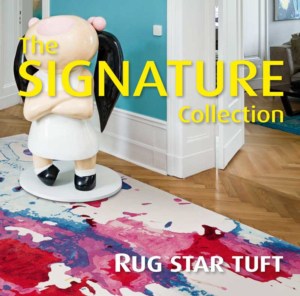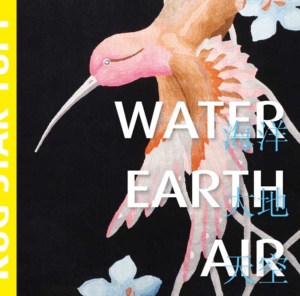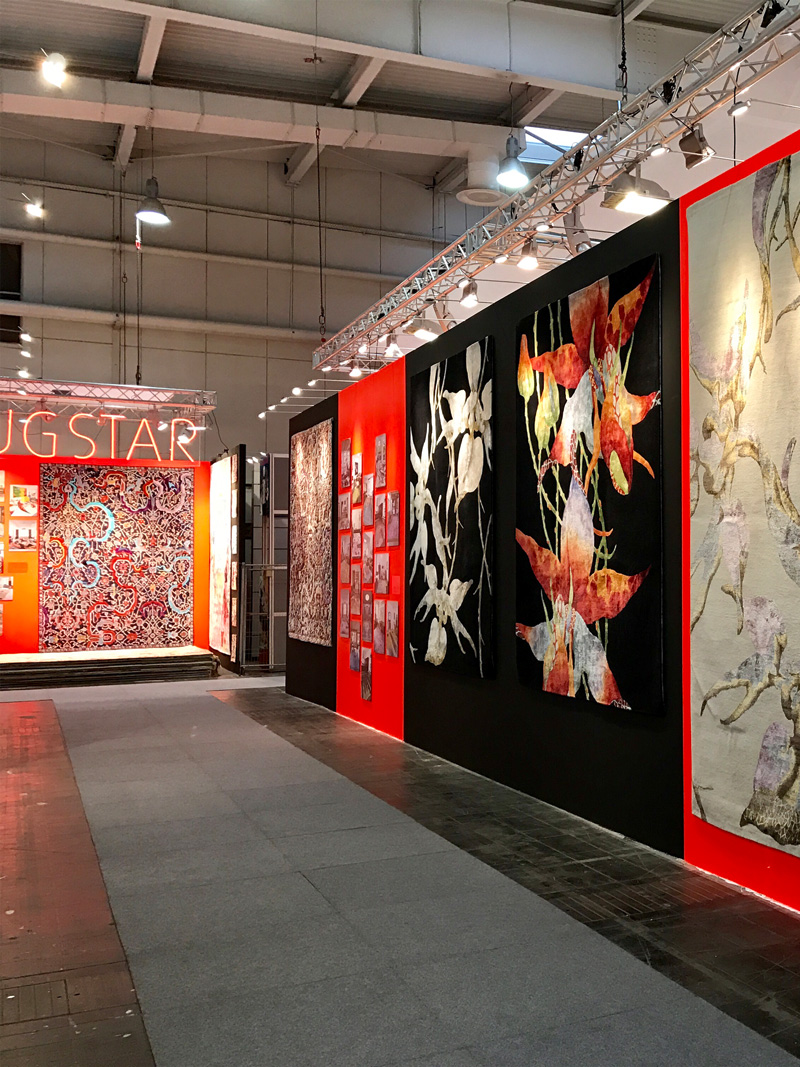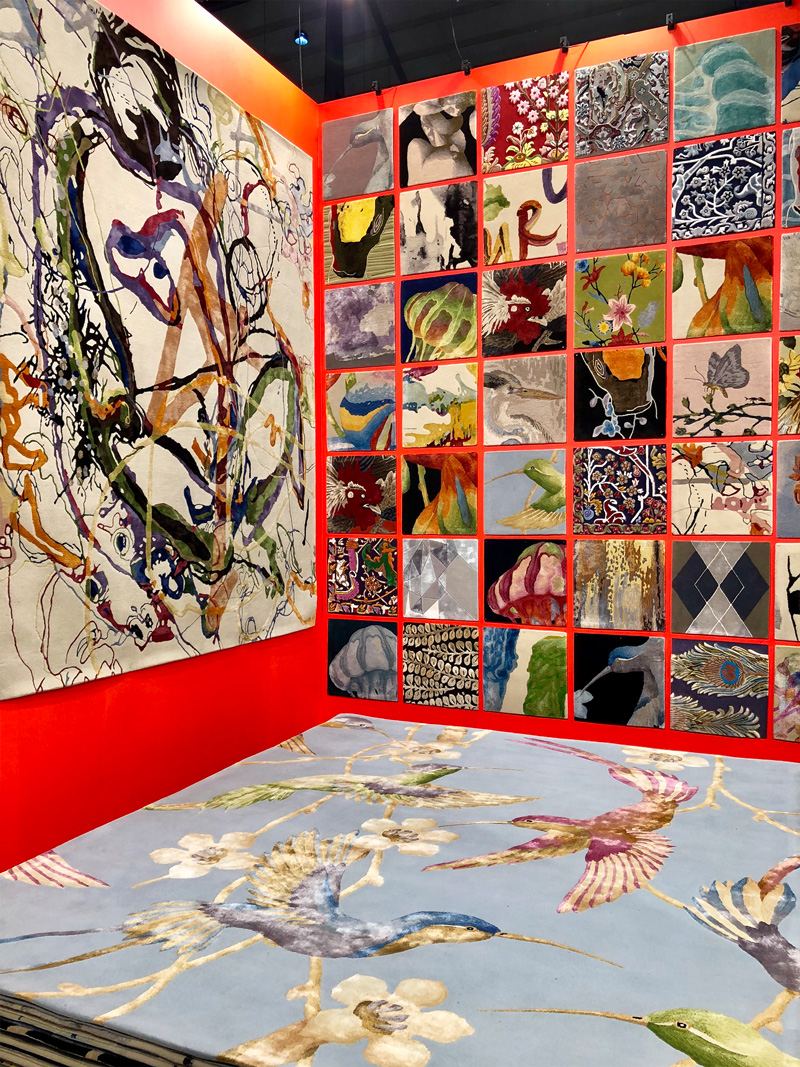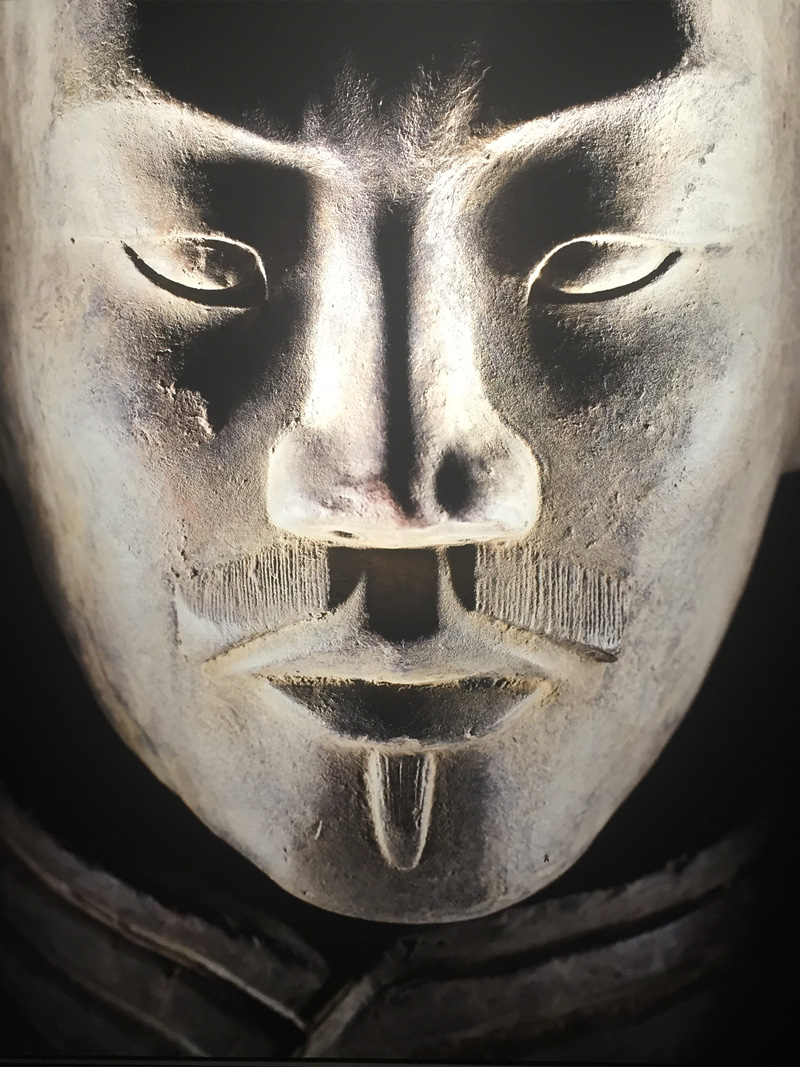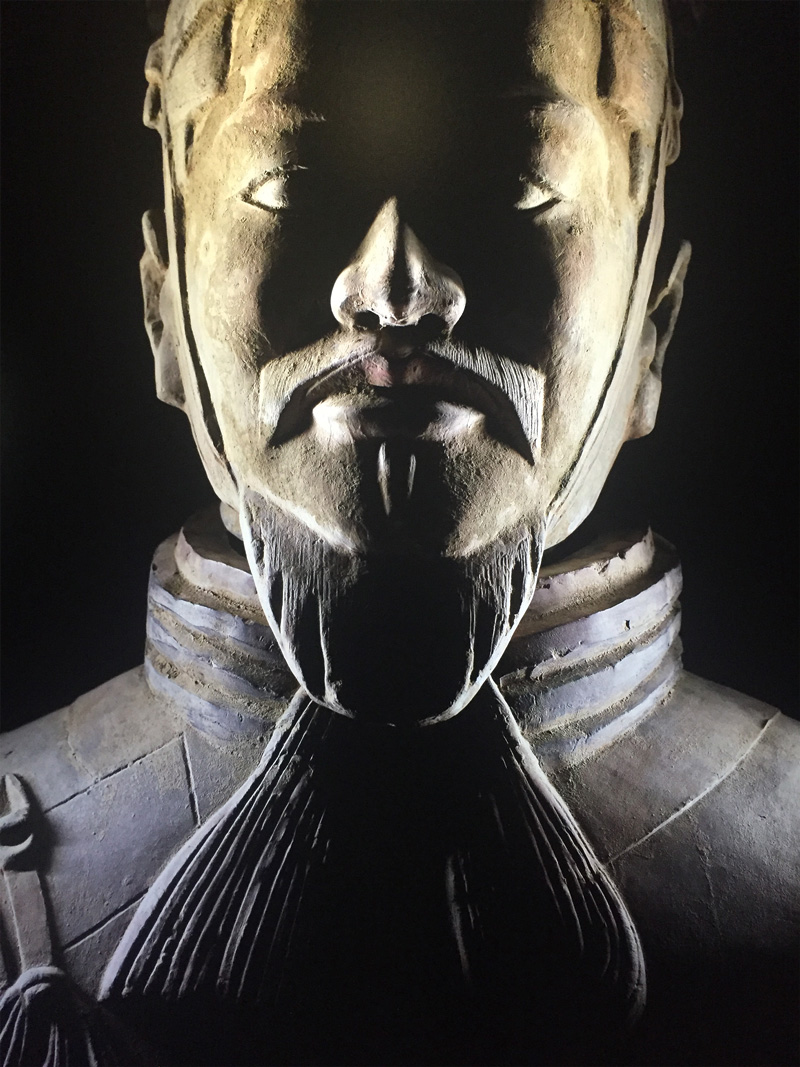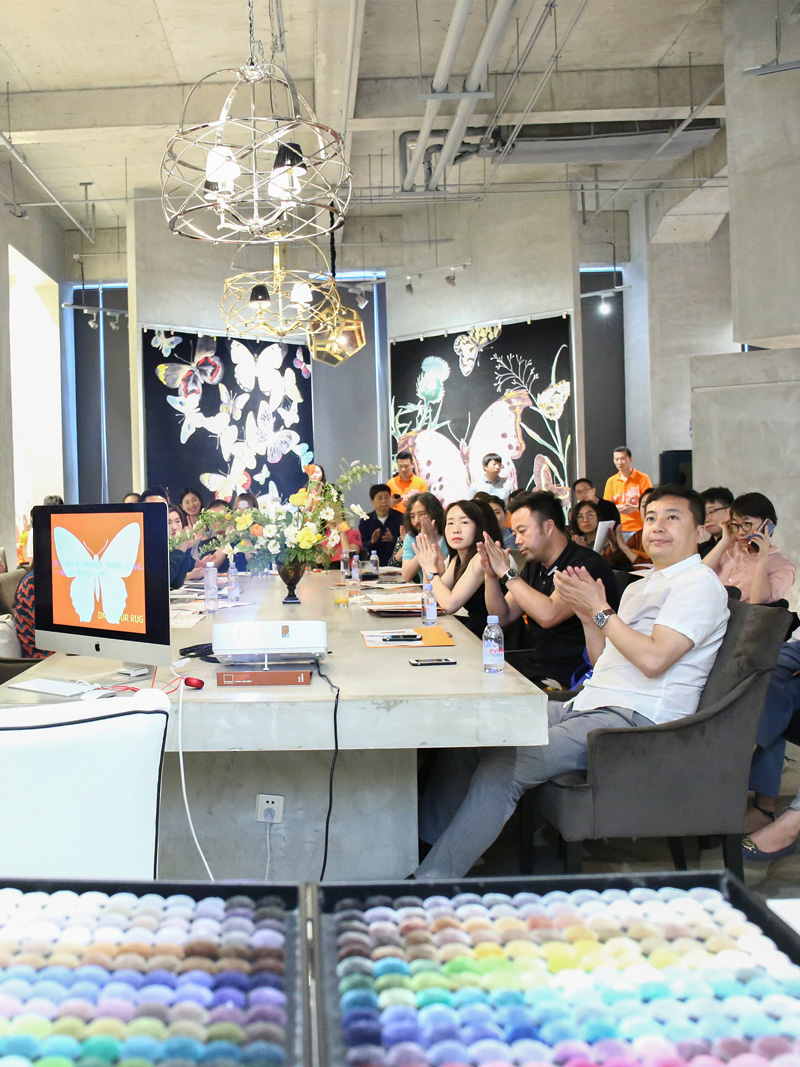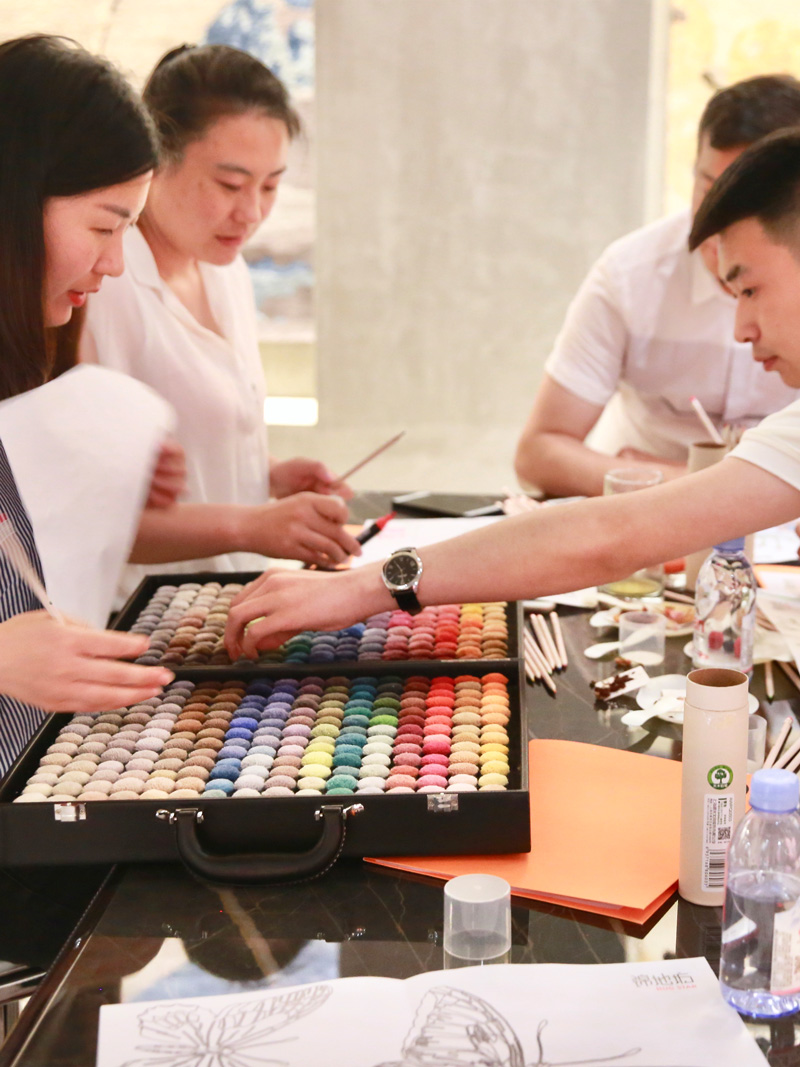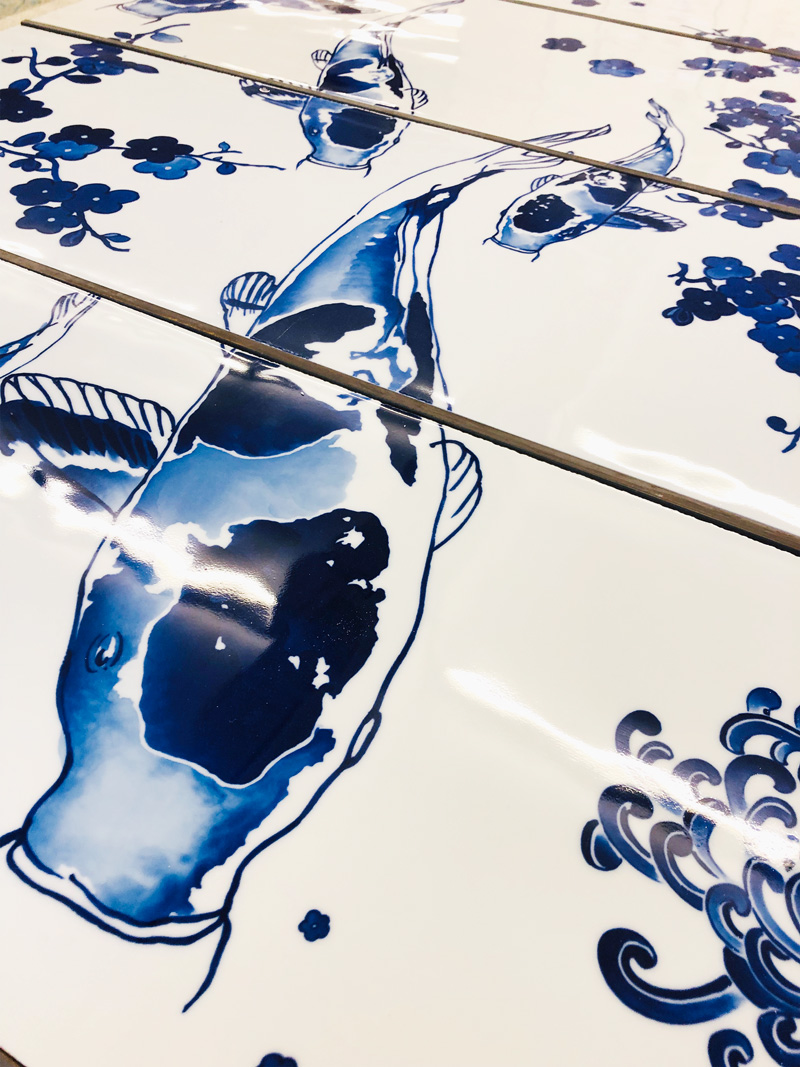Eating Color in China
Ladies and gentlemen, it is my utmost honor and delight to present to you the captivating RUG STAR experience in China. Allow me to begin by introducing our TUFT Signature Collection, an extraordinary compilation of the finest RUG STAR designs that have graced the market over the past 15 years. With great pride, we have translated these exceptional designs into our new product range, the epitome of high-end luxury – Tuft.
Tuft – a word that has resonated deeply with me in recent years. Unfortunately, it remains vastly underrated by most manufacturers and designers. However, at RUG STAR, we possess an unwavering belief in its immense potential and the cutting-edge expressions it can manifest within private residences and prestigious hotel contracts. Take my hand, and let us embark on a journey to our newest production sites in China, where since 2017, we have been meticulously crafting RUG STAR designs in their most exquisite form – Tuft.
This compilation serves as a testament to the magnificent beauty we have masterfully created since 2002. It is a celebration of our ability to transform ideas into tangible works of art.
Contrary to popular belief, Tuft is not a recent discovery for me. I first had the pleasure of working with this remarkable product back in 2004 when the renowned Swedish furniture company IKEA approached me to design Tuft products. I was elated by their request, as I knew I would be the first German designer to collaborate with them. IKEA’s exceptional team captured my heart, and I felt an immediate connection with them. Additionally, they invited me to China to oversee the production process. It was during this trip that I met Ma Jin, the exclusive representative of RUG STAR for the entire Tuft collection in the Chinese market. Our bond extends beyond business – it is a profound friendship rooted in mutual respect and a shared vision. The collaboration with Ma Jin is a testament to our intelligent and powerful partnership.
Now, let me shine a spotlight on our extraordinary showroom in Beijing – a sprawling space occupying 800 square meters in a prime location. Within its walls, we proudly display around 100 hand-knotted RUG STAR designs in both Tibetan and Persian weaves. This showcase represents the incredible diversity in design language we have developed over the past 15 years. Moreover, we have seamlessly integrated our luxury Tuft collection, produced right here in China, creating a perfect fusion of artistic expression.
The design of our new RUG STAR Showroom was entrusted to Mr. Caijiao, a highly talented and renowned interior designer from China. He successfully maintained the industrial and clean charm of the space while focusing on the essence of creating a gallery-like environment. This allows our rugs to be presented as contemporary works of art. The seamless integration of Mr. Caijiao’s design language, coupled with the vast expanse of our showroom, signifies the next level of presentation – bold, daring, and undeniably RUG STAR.
Since 2016, I have frequented China, conducting workshops such as “Color is my DNA” and “Eating Color with Jürgen Dahlmanns.” I have also participated in esteemed fairs like the CIFF in Shanghai and the COVER presentation of international rug brands at Domotex Asia. With every visit, my affection for this remarkable country deepens. After Nepal, India, and Berlin, Beijing has now become an extended home – a city I hold dear in my heart.
Thank you for joining me on this exhilarating journey through the world of RUG STAR. Together, let us continue to weave stories of artistry, passion, and innovation that transcend borders and inspire the world.
RUG STAR in China
RUG STAR’s Beijing showroom is a stunning display of the brand’s diverse and eclectic design language. Covering 800 square meters, the showroom features around 100 hand-knotted RUG STAR designs, showcasing the brand’s commitment to quality and attention to detail. The showroom seamlessly integrates the brand’s Tuft collection, produced locally in China, into its existing offerings, providing customers with a perfect fusion of artistic expression.
The design of the showroom was entrusted to Mr. Caijiao, a renowned interior designer from China who successfully captured the industrial and clean charm of the space while focusing on creating a gallery-like environment. This allows the brand’s rugs to be presented as contemporary works of art, further emphasizing the brand’s commitment to design and innovation.
Tufting
Tufting is a popular method for creating carpets and rugs that involves the use of a specialized machine called a tufting gun. The process involves inserting yarn into a fabric backing material, which creates the pile that forms the surface of the finished product. Here is a breakdown of the tufting process:
- Design and Material Selection: The process begins with designing the pattern and selecting the appropriate yarn and backing material for the desired look, texture, and durability.
- Preparing the Backing Material: The fabric backing material is prepared by stretching it over a frame and then applying a coat of latex adhesive. This provides a stable base for the tufting process.
- Tufting: The tufting gun is used to insert yarn through the fabric backing material, creating loops of yarn on the other side. The yarn is fed through the tufting gun from spools or cones, and the machine can create multiple loops at once.
- Cutting the Pile: Once the tufting is complete, the loops of yarn are cut to create the pile that forms the surface of the finished product. The pile can be cut to different lengths, creating different textures and appearances.
- Finishing: The finished product is then treated with a finishing process that includes washing, drying, and trimming the edges. This ensures that the product is clean, even, and free of defects.
Tufting is a versatile process that allows for a wide range of designs and textures, making it a popular choice for carpets, rugs, and other types of soft flooring. It is a relatively quick and efficient process that can be used to create large quantities of products with consistent quality. The use of computerized tufting machines has further streamlined the process, allowing for precise control over the placement of the yarn and creating highly detailed designs.
RUG STAR Team China
The Chinese team of RUG STAR is indeed an incredible group of people, and Jürgen Dahlmanns, the CEO and Head of Design, has a deep appreciation for their hard work and dedication. While Ma Jin serves as the big boss of the Chinese team, Dahlmanns has a special place in his heart for Sally San, the operative chief of the entire cooperation they founded together in China.
Together, Dahlmanns, San, and the Chinese team have attended several fairs in China, showcasing RUG STAR’s luxurious Tuft collection to the world. They have also established two factories in Beijing and Guangzhou to produce their unique and high-quality tufted rugs for the Chinese market.
Additionally, the RUG STAR team in China has hosted numerous designer events in their beautiful Beijing showroom. One such event was “Eating Color with RUG STAR,” which invited designers and creatives to explore the connection between food and color. These events not only showcase RUG STAR’s luxurious tufted rugs but also celebrate creativity and innovation in all forms. The Chinese team’s passion for design and dedication to their work has been a driving force behind RUG STAR’s success in China, and they continue to inspire and push the boundaries of tufted rug design.
These experiences have been nothing short of stunning and full of big adventures, from the bustling cities of Beijing, Shanghai, and Guangzhou to the creative and innovative spirit of the Chinese team. Dahlmanns is grateful for the opportunity to work with such a talented and hardworking group of individuals and looks forward to continuing their collaboration for years to come.
3D Tufting on denim
The 3D tufting method is an innovative approach to tufting that involves using a strong cotton or denim foundation and tufting only a portion of it. This creates a three-dimensional effect that adds texture and depth to the design. The 3D tufting technique is particularly effective for creating intricate patterns and designs that require a high level of detail and precision.
One of the advantages of 3D tufting is that it allows for greater flexibility in design and customization. By tufting only a portion of the foundation material, designers can create unique and complex designs that are difficult or impossible to achieve with traditional tufting methods. Additionally, the use of strong cotton or denim as a foundation material provides a sturdy base for the tufted pile, ensuring durability and longevity. And at the same time just looks amazingly stunning and gives a new understanding of how to play with light and shadow on the surface of a luxurious tuft rug.
Overall, 3D tufting represents a significant advancement in the field of tufting, offering designers new opportunities for creative expression and product differentiation. As technology continues to evolve and new materials and techniques become available, the possibilities for innovative and luxurious tufted products are truly limitless.
Luxurious Robot Tuft
The introduction of the robot tuft technology has revolutionized the tufting industry and RUG STAR has taken advantage of this innovation for their tuft collection in China. The robot tuft has the potential to produce high-quality, luxurious tufted products with unmatched precision and efficiency. This technology has opened up new design possibilities for RUG STAR, allowing them to create intricate patterns and designs that were previously impossible to achieve with traditional tufting methods.
The robot tuft works by using a programmed robotic arm to insert individual tufting needles into the backing fabric, creating a plush pile. This process is much faster and more precise than traditional tufting methods, resulting in a higher-quality finished product. Additionally, the robot tuft allows for customization and flexibility in design, as patterns can be easily programmed into the machine and adjusted as needed.
Overall, robot tuft technology has enabled RUG STAR to create innovative and luxurious tufted products that meet the high standards of their customers. With the potential for even more advancements in the future, it is an exciting time for the tufting industry and RUG STAR is at the forefront of this technological revolution.
Hotel Contract
It is true that hand-knotted rugs are often used in private homes, while tufted rugs are becoming increasingly popular in commercial settings. The RUG STAR luxurious Tuft collection from China is no exception. In fact, the collection is specifically designed to target the hotel contract and public spaces market.
Tufted rugs have a number of advantages over other types of rugs in commercial settings. They are more durable and easier to clean, making them ideal for high-traffic areas such as hotel lobbies, restaurants, and other public spaces. Additionally, tufted rugs can be produced in a variety of colors, patterns, and textures, making them a versatile choice for interior designers and architects.
The RUG STAR luxurious Tuft collection from China is no exception. The collection features a range of colors, patterns, and textures designed to meet the needs of commercial clients. From bold geometric patterns to subtle gradients, the collection offers something for every design aesthetic. And with the use of advanced technology, including robot tuft and 3D tuft techniques, the collection offers a level of quality and luxury that is unmatched in the industry.
Collaboration with IKEA
In 2004, the renowned Swedish furniture company IKEA approached Jürgen Dahlmanns, CEO and Head of Design at RUG STAR, to collaborate on designing products using the Tuft technique. Dahlmanns was elated by the request, knowing he would be the first German designer to collaborate with IKEA, and he eagerly accepted the invitation.
The first collection that Dahlmanns developed for IKEA was named VORK, and it was a modular rug system that involved the consumer in the design process. The system allowed consumers to play with designs, patterns, and sizes in their homes, giving them the ability to create custom rugs that suited their personal preferences.
Working with IKEA’s exceptional team, Dahlmanns felt an immediate connection, and he was invited to China to oversee the production process. During this trip, he met Ma Jin, who became 15 years later the exclusive representative of RUG STAR for the entire Tuft collection in the Chinese market. This meeting marked the beginning of a profound friendship rooted in mutual respect and a shared vision.
The collaboration with IKEA was an exciting opportunity for Dahlmanns to showcase his design expertise and bring the Tuft technique to a wider audience. The project involved designing products for IKEA using the Tuft technique, which involved punching yarn through a backing fabric to create a plush pile. Dahlmanns’ designs were innovative and groundbreaking, and they showcased the immense potential of the Tuft technique.
Mixing colors with the Tufting Gun
Mixing colors and graduations in tufting is indeed a complex process that requires specialized tools and techniques. One of the secrets of successful tufting is the use of a tufting gun, which can feed up to six fibers at the same time.
To create intricate designs and color gradients, tufting artists need to carefully select the colors and fibers they want to use and feed them into the tufting gun in the correct order and proportion. The tuft gun’s mechanism then punches the fibers through the backing material to create the desired pattern or image.
This process requires a high level of skill and precision, as even a small mistake in the color or fiber selection can result in a flawed design. However, with the right expertise and attention to detail, tufting artists can create stunning and intricate designs that showcase the full potential of the tufting technique.
Tencel and Co
The materials used in tufting can vary, but New Zealand wool, viscose, and acrylic are commonly used due to their durability and softness. However, in recent years, there has been an increasing interest in using more sustainable and environmentally friendly materials in tufting, such as cellulose-based fibers.
These fibers are derived from renewable sources like bamboo, eucalyptus, and beech trees, making them a more eco-friendly option than acrylic. They are also known for their natural sheen, softness, and breathability, making them a great choice for high-quality tufted rugs.
Tencel is a popular brand of cellulose-based fiber that is becoming increasingly popular in the tufting industry due to its unique advantages. Tencel fibers are produced sustainably and have a smooth, silky texture that gives tufted rugs a luxurious look and feel. Tencel is also highly absorbent, making it ideal for use in humid environments like bathrooms and spas. Moreover, Tencel fibers have excellent moisture management properties, which means that they can help regulate temperature and keep the indoor environment comfortable. Overall, Tencel is an excellent choice for tufted rugs that require durability, softness, and eco-friendliness.
